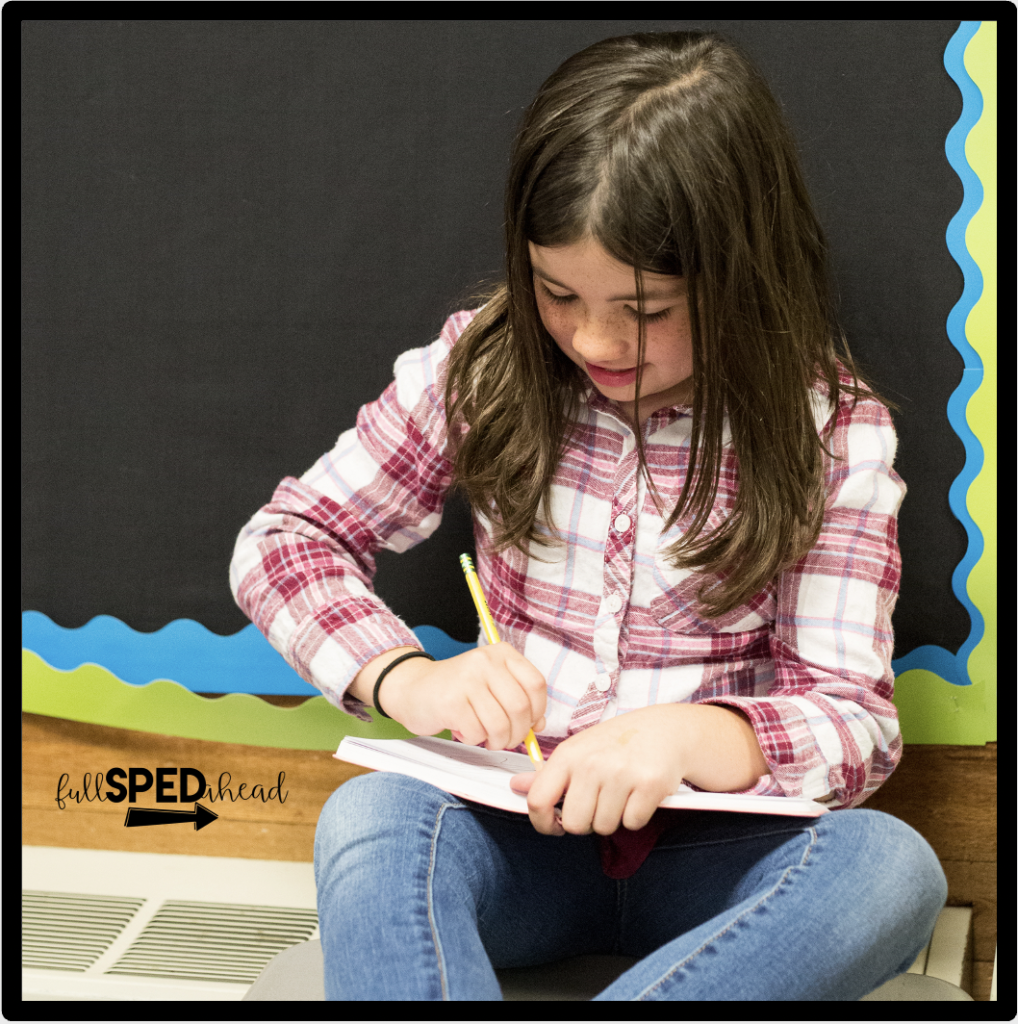I am excited to introduce this week’s guest blogger, Lisa Hollady from Chalkboard Superhero. She is a high school special education teacher and special needs mom! Lisa wants to talk more about 5 prompting mistakes that special educators may be making!

Prompting mistakes will happen all of the time, the key is to recognize when and how we are doing it so that we can correct it in the future.
Parents and teachers alike will often unintentionally prompt students, which will get the student to the correct answer or tasks completion quicker, but not in the right way.
However, once I point out the error, the parent or teacher is often shocked that they gave an unnecessary cue, or prompt, unintentionally.
This makes teachers understand that even though we may know about the prompt hierarchy, or have had prior training in using effecting prompting, we, too, can be using prompts unintentionally.

This is a tricky one because a lot of people may agree that many students with disabilities are unable to read the social cues on our faces. However, this is simply not true in this case. Students learn very fast if an adult is leading to the correct response simply by the facial expression that they are using.
I was working with a student once trying to collect data for recognizing shapes. This was the first trial and when I asked her to point to the heart, she would touch a shape and then look at me, waiting for a change in my response. I learned not to give any type of facial cue as to which response was correct unless she was sure. This was hard to do, as I am used to giving immediate feedback.
If you have paraprofessionals that are having a hard time not giving in to facial prompting, try to have them look in another direction while the student is responding.
This is essentially the same mistake teachers are making as I mentioned above, but instead using their eye gaze.
One time, I was observing a paraprofessional working with a high school student with severe Autism. She was working on number recognition with him. Every time the paraprofessional laid 4 answers out, she would ask a question, and every time he would get it right. I quickly realized that she was LOOKING at the correct answer every time. He noticed that, even though he is non-verbal, he understood that he needed to choose the one she is staring at!
This is a very common mistake and is easily corrected once you and your paraprofessionals are aware of it.
I once had a parent do the same thing. She told me that her son knew all the letters, but I couldn’t get him to recognize just the letters in his name. I had her send me a video of this and I even scheduled a home visit after this. What I had observed was her giving gestural prompts, of eye gazes and she even gave her son positional prompts, by putting the answer closest to him every time. It was no wonder he was getting them all correct, she was basically giving him all the answers.
Another mistake that is often made is when teachers or paraprofessionals don’t give any (or only one) distractor.
For instance, if I am working with a student with one of my adapted books and there are 8 options on the right-hand side, the student will get all the way to that last option and not even want to read the page, just match the picture. To help this, I have extra adapted pieces that I will have with me, to use if this is a problem for the student.
I have found that using the Unique Learning Systems sometimes has a problem with not having any distractors. Students need to learn to problem-solve, even if they have one option left!

This mistake is the biggest mistake that I see happening in special education classrooms. If you are familiar with the prompt hierarchy, you will know that you need to fade the prompts so the student doesn’t become prompt-dependent!
All too often, I see students living in one level of prompting, and more often than not, it’s the most intrusive prompt, hand-over-hand prompting.
If you want to learn more on how to fade prompts, read this blog post here!
Let’s say you have a cut and paste activity for a student to do. The student is supposed to sort zoo and beach items into 2 different categories. The student cuts out all of the choices. The paraprofessional picks up the sandcastle and says, “where does this go?“, and puts the glue on the correct side.
The student then places the image on the glue. The paraprofessional has basically given the correct answer! The student learns nothing from this.
So, how can you fix this? If the student is unable to use the glue, wait for the student to place the picture down on the page and then glue it down. Additionally, you can have tape on the back and let the student place the image into the correct category.
I see this mistake happen using velcro dots as well. Don’t get me wrong, I love me some velcro dots! Like ALOT! But sometimes, we are placing those velcro dots where the answers are to go and predetermining the child’s responses. For those types of activities, try using tacky glue instead, works just the same as velcro dots!
Looking for more life skills information, read this blog!
Instagram | TeachersPayTeachers | Facebook | Boom Learning Library | Pinterest | Youtube
What are you looking for?
COPYRIGHT © 2025 Full SPED Ahead